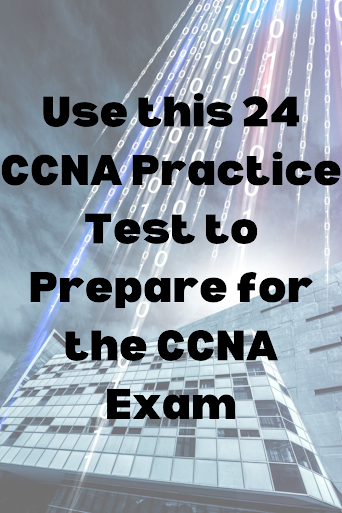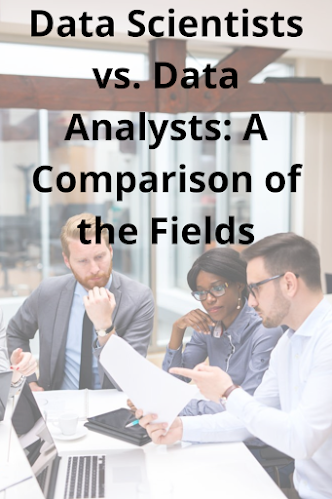Use this 24 CCNA Practice Test to Prepare for the CCNA Exam
Use this 24 CCNA Practice Test to Prepare for the CCNA Exam
The Cisco Certified Network Associate (CCNA) exam (200-301) is a 120-minute, 100 question assessment associated with the CCNA certification. This exam tests your knowledge and skills on topics such as:
- Network fundamentals
- Network access
- IP connectivity
- IP services
- Security fundamentals
- Automation and programmability
CCNA Practice Test Questions
Network Fundamentals
This section includes four questions.
- When installing Cisco AnyConnect modules on a PC, which module must you install first?
A. Telemetry
B. VPN
C. DART
D. Posture
E. CSSC
F. Web Security
G. NAM
Correct answer: B
- Which three statements about MAC addresses are correct?
A. To communicate with other devices on a network, a network device must have a unique MAC address.
B. The MAC address is also referred to as the IP address.
C. The MAC address of a device must be configured in the Cisco IOS CLI by a user with administrative privileges.
D. A MAC address contains two main components, the first of which identifies the manufacturer of the hardware and the second of which uniquely identifies the hardware.
E. An example of a MAC address is 0A:26:B8:D6:65:90.
F. A MAC address contains two main components, the first of which identifies the network on which the host resides and the second of which uniquely identifies the host on the network.
Correct answer: A, D, and E
- Which three statements about network characteristics are true?
A. Speed measures the data rate in bits per second of a given link in the network.
B. Scalability indicates how many nodes are currently on the network.
C. The logical topology is the arrangement of cables, network devices, and end systems.
D. Availability is a measure of the probability that the network will be available for use when it is required.
E. Reliability indicates the dependability of the components that make up the network.
Correct answer: A, D, and E
- Which two statements about the purpose of the OSI model are accurate?
A. It defines the network functions that occur at each layer.
B. It facilitates an understanding of how information travels throughout a network.
C. Changes in one layer do not impact another layer.
Correct answer: A and B
Network access
This section includes four questions.
- What is the maximum number of lightweight APs that a single Cisco WCS Navigator management console can support with Cisco WCS and Cisco WLC running version 7.0 code?
A. 6,000
B. 60,000
C. 1,000
D. 10,000
E. 3,000
F. 30,000
Correct answer: F
- How can the Cisco Discovery Protocol be used?
A. To allow a switch to discover the devices connected to its ports
B. To determine the hardware platform of the device
C. To determine the IP addresses of connected Cisco devices
D. All of the above
Correct answer: D
- How does STP prevent forwarding loops at OSI Layer 2?
A. TTL
B. MAC address forwarding
C. Collision avoidance
D. Port blocking
Correct answer: D
- Which two statements about EtherChannel technology are true?
A. EtherChannel provides increased bandwidth by bundling existing FastEthernet or Gigabit Ethernet interfaces into a single EtherChannel.
B. STP does not block EtherChannel links.
C. You can configure multiple EtherChannel links between two switches, using up to a limit of 16 physical ports.
D. EtherChannel does not allow load sharing of traffic among the physical links within the EtherChannel.
E. EtherChannel allows redundancy in case one or more links in the EtherChannel fail.
Correct answer: A and D
IP connectivity
This section includes three questions.
- Which command should you use to configure an IPv6 static default route?
A. ipv6 route ::/0 interface next-hop
B. ipv6 route default interface next-hop
C. ipv6 route 0.0.0.0/0 interface next-hop
D. ip route 0.0.0.0/0 interface next-hop
Correct answer: A
- Which statement about static and dynamic routes is true?
A. Dynamic routes are manually configured by a network administrator, while static routes are automatically learned and adjusted by a routing protocol.
B. Static routes are manually configured by a network administrator, while dynamic routes are automatically learned and adjusted by a routing protocol.
C. Static routes tell the router how to forward packets to networks that are not directly connected, while dynamic routes tell the router how to forward packets to networks that are directly connected.
D. Dynamic routes tell the router how to forward packets to networks that are not directly connected, while static routes tell the router how to forward packets to networks that are directly connected.
Correct answer: B
- What is the purpose of the show ip ospf interface command?
A. Displaying OSPF-related interface information
B. Displaying general information about OSPF routing processes
C. Displaying OSPF neighbor information on a per-interface basis
D. Displaying OSPF neighbor information on a per-interface-type basis
Correct answer: A
IP services
This section includes three questions.
- What will happen if you configure the logging trap debug command on a router?
A. It causes the router to send messages with lower severity levels to the syslog server.
B. It causes the router to send all messages with the severity levels Warning, Error, Critical, and Emergency to the syslog server.
C. It causes the router to send all messages to the syslog server.
D. It causes the router to stop sending all messages to the syslog server.
Correct answer: C
- Which Cisco IOS command will indicate that interface GigabitEthernet 0/0 configures via DHCP?
A. show ip interface GigabitEthernet 0/0 dhcp
B. show interface GigabitEthernet 0/0
C. show ip interface dhcp
D. show ip interface GigabitEthernet 0/0
E. show ip interface GigabitEthernet 0/0 brief
Correct answer: D
- Which statement about the nature of NAT overload is true?
A. It applies a one-to-many relationship to internal IP addresses
B. It applies a one-to-one relationship to internal IP addresses
C. It applies a many-to-many relationship to internal IP addresses
D. It can configure only on Gigabit interface
Correct answer: A
Security fundamentals
This section includes seven questions.
- Which command verifies whether any IPv6 ACLs configure on a router?
A. show ipv6 interface
B. show access-list
C. show ipv6 access-list
D. show ipv6 route
Correct answer: C
- Which command can you enter to allow support for Telnet in addition to SSH?
A. transport input telnet ssh
B. transport input telnet
C. no transport input telnet
D. privilege level 15
Correct answer: A
- AAA stands for authentication, authorization, and accounting.
A. False
B. True
Correct answer: B
- You have several operating groups in your enterprise that require differing access restrictions to the routers to perform their job roles. These groups range from Help Desk personnel to advanced troubleshooters. What is one methodology for controlling access rights to the routers in these situations?
A. Configure multiple privilege level access.
B. Configure ACLs to control access for the different groups.
C. Implement syslogging to monitor the activities of the groups.
D. Configure TACACS+ to perform scalable authentication.
Correct answer: A
- Which option is the term for the likelihood that a particular threat using a specific attack will exploit a particular vulnerability of a system that results in an undesirable consequence?
A. An exploit.
B. An attack.
C. A risk.
D. A vulnerability.
Correct answer: C
- Which statement is true when using zone-based firewalls on a Cisco router?
A. Interface ACLs are applied before zone-based policy firewalls when they are applied outbound.
B. Policies are applied to traffic moving between zones, not between interfaces.
C. When configured with the “PASS” action, stateful inspection applies to all traffic passing between the configured zones.
D. The firewalls can be configured simultaneously on the same interface as classic CBAC using the IP inspect CLI command.
Correct answer: B
- Which option is the term for what happens when you develop computer code to take advantage of a vulnerability? (For example, a vulnerability exists in a piece of software, but nobody knows about this vulnerability).
A. A vulnerability.
B. An attack.
C. An exploit.
D. A risk.
Correct answer: C
Automation and Programmability
This section includes three questions.
- Which option about JSON is true?
A. It uses predefined tags or angle brackets (<>) to delimit markup text.
B. It is used to describe structured data that includes arrays.
C. It is used for storing information.
D. Similar to HTML, it is more verbose than XML.
Correct answer: B
- Which of the following is the JSON encoding of a dictionary or hash?
A. { “key”: “value”}
B. [“key”, “value”]
C. {“key”, “value”}
D. (“key”: “value”)
Correct answer: A
- Which option best describes an API?
A. A contract that describes how various components communicate and exchange data with each other.
B. An architectural style (versus a protocol) for designing applications.
C. A stateless, client-server model.
D. A request for a certain type of data by specifying the URL path that models the data.
Correct answer: A



















